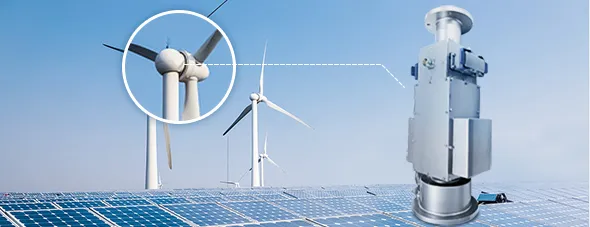Have you ever wondered how wind turbines effectively convert wind energy into electricity? One vital component that enables this process is the slip ring. But what is the function of the slip ring in a wind turbine?? In this article, we will delve into the intricacies of slip rings, exploring their purpose and significance in the operation of wind turbines.
Answering the Questions
Wind turbines harness the power of wind to generate electricity, but their rotating blades present a unique challenge when it comes to transferring electrical power to the stationary components. This is where slip rings come into play. Let’s examine the various aspects of slip rings in wind turbines.
What is a Slip Ring?
A slip ring, also known as a rotary electrical joint or collector ring, is an electromechanical device that allows the transmission of electrical signals and power between rotating and stationary parts of a system. It is commonly used in wind turbines, where it enables the transfer of electrical energy from the rotating blades to the non-rotating components.
Function of Slip Rings in Wind Turbines
In wind turbines, slip rings serve a critical function in transmitting electrical power from the generator located in the nacelle (the housing atop the tower) to the grid. As the wind rotates the blades, the energy generated is converted into electrical power by the generator. However, since the blades are in constant motion, the electrical power needs to be transmitted from the rotating hub to the stationary components of the wind turbine.
How Slip Rings Work in Wind Turbines
Slip rings consist of two main components: a stationary part called the stator and a rotating part known as the rotor. The stator is connected to the stationary components of the wind turbine, while the rotor is attached to the rotating hub, which is directly connected to the blades. The rotor and stator are separated by a small air gap to ensure insulation.
Inside the slip ring, metal brushes make electrical contact with the rotor, allowing the transfer of electrical power. These brushes are designed to slide over the surface of the rotor smoothly, maintaining a continuous electrical connection even as the rotor rotates. This enables the transmission of the electrical power generated by the wind turbine to the stationary parts without interruption.
Importance of Slip Rings in Wind Turbines
The presence of slip rings in wind turbines ensures the efficient and reliable transfer of electrical power from the rotating blades to the stationary components. Without slip rings, it would be challenging to transmit the generated electricity and connect it to the grid for distribution. Thus, slip rings play a vital role in facilitating the conversion of wind energy into usable electrical power.
Conclusion
In conclusion, slip rings are essential components in wind turbines, enabling the seamless transfer of electrical power from the rotating blades to the stationary components. By maintaining a continuous electrical connection, slip rings ensure that the generated energy can be efficiently harnessed and delivered to the grid for widespread use. If you have any further questions about the function of slip rings in wind turbines, feel free to comment below.
Frequently Asked Questions
Q1: Are Slip Rings Only Used in Wind Turbines?
A1: No, slip rings have a wide range of applications beyond wind turbines. They are commonly found in various rotating machinery, such as electric motors, generators, and even in some types of industrial equipment.
Q2: Do Slip Rings Require Maintenance?
A2: Yes, slip rings do require regular maintenance to ensure their optimal performance. Over time, dust, debris, and oxidation can accumulate on the surface of the slip rings, affecting the electrical contact and causing issues such as signal loss or power transmission problems. Routine inspections, cleaning, and lubrication of the slip rings are necessary to prevent these issues and maintain their efficiency.
Q3: Can Slip Rings Be Replaced or Repaired?
A3: Yes, if a slip ring becomes damaged or worn out, it can be replaced or repaired. However, it is recommended to consult a professional technician or the manufacturer for proper diagnosis and guidance. Depending on the extent of the damage, the slip ring may need to be replaced entirely or specific components can be repaired or replaced.
Q4: Are There Any Advancements in Slip Ring Technology?
A4: Yes, slip ring technology has seen advancements in recent years. Some modern slip rings incorporate advanced materials and designs to improve their durability, reduce maintenance requirements, and enhance their electrical performance. Additionally, there are now slip rings available that can transmit not only electrical signals but also other media such as Ethernet, fiber optics, and fluids, making them more versatile for various applications.
Q5: Can Slip Rings Handle High-Power Transmission?
A5: Yes, slip rings are designed to handle high-power transmission in wind turbines and other applications. They are built to withstand high voltage and current levels without compromising the electrical connection. However, it is crucial to ensure that the slip rings are correctly sized and rated for the specific power requirements of the wind turbine or the system in which they are being used.
In summary, slip rings are vital components in wind turbines, allowing for the efficient transfer of electrical power from the rotating blades to the stationary components. Their role in maintaining a continuous electrical connection ensures the seamless conversion of wind energy into usable electricity. Regular maintenance and proper care of slip rings are essential to ensure their optimal performance and longevity.
See What We Can Do

